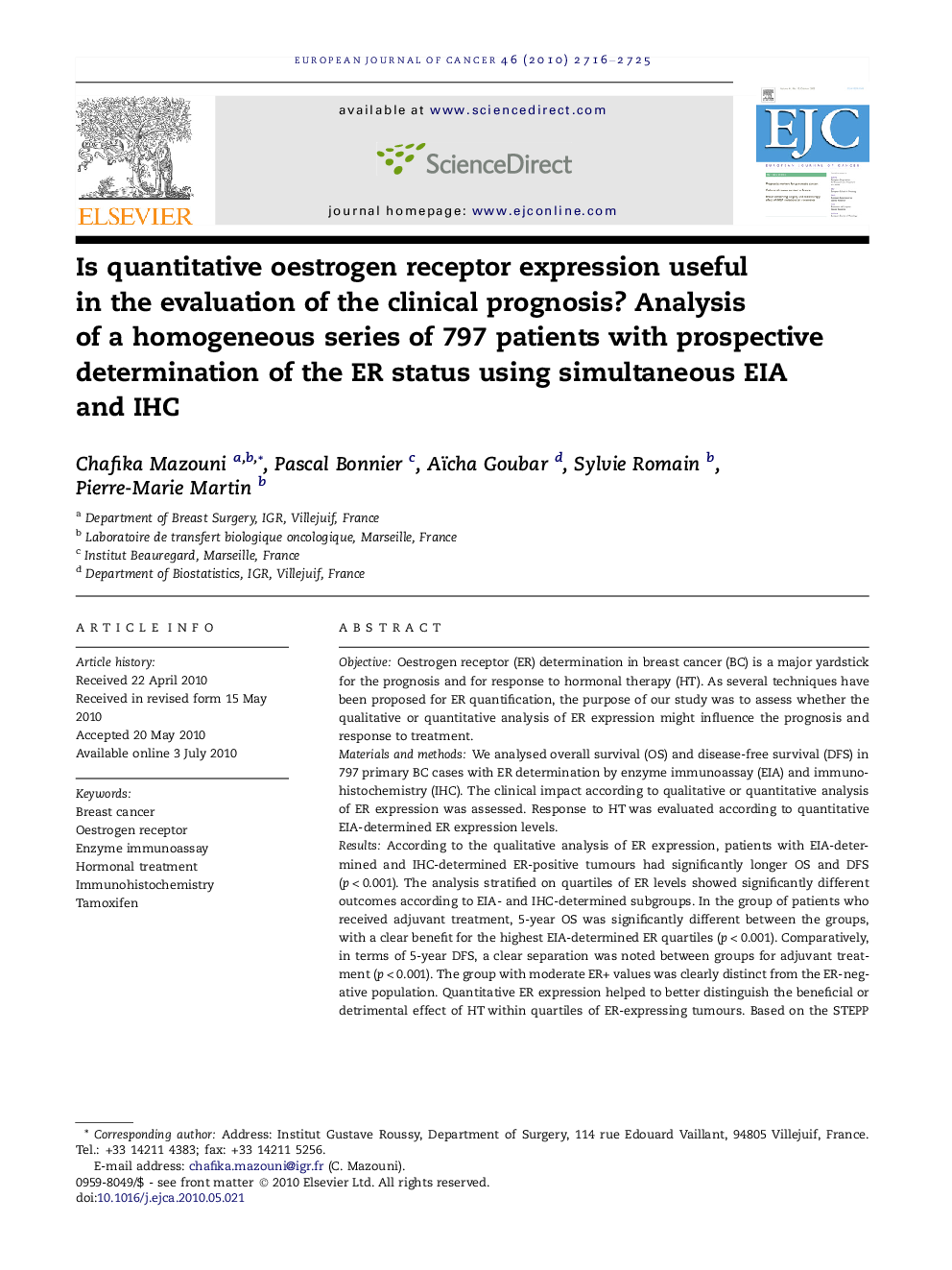| کد مقاله | کد نشریه | سال انتشار | مقاله انگلیسی | نسخه تمام متن |
|---|---|---|---|---|
| 2125088 | 1547205 | 2010 | 10 صفحه PDF | دانلود رایگان |

ObjectiveOestrogen receptor (ER) determination in breast cancer (BC) is a major yardstick for the prognosis and for response to hormonal therapy (HT). As several techniques have been proposed for ER quantification, the purpose of our study was to assess whether the qualitative or quantitative analysis of ER expression might influence the prognosis and response to treatment.Materials and methodsWe analysed overall survival (OS) and disease-free survival (DFS) in 797 primary BC cases with ER determination by enzyme immunoassay (EIA) and immunohistochemistry (IHC). The clinical impact according to qualitative or quantitative analysis of ER expression was assessed. Response to HT was evaluated according to quantitative EIA-determined ER expression levels.ResultsAccording to the qualitative analysis of ER expression, patients with EIA-determined and IHC-determined ER-positive tumours had significantly longer OS and DFS (p < 0.001). The analysis stratified on quartiles of ER levels showed significantly different outcomes according to EIA- and IHC-determined subgroups. In the group of patients who received adjuvant treatment, 5-year OS was significantly different between the groups, with a clear benefit for the highest EIA-determined ER quartiles (p < 0.001). Comparatively, in terms of 5-year DFS, a clear separation was noted between groups for adjuvant treatment (p < 0.001). The group with moderate ER+ values was clearly distinct from the ER-negative population. Quantitative ER expression helped to better distinguish the beneficial or detrimental effect of HT within quartiles of ER-expressing tumours. Based on the STEPP analysis which showed a trend towards an ER effect on DFS as a function of HT assignment, we confirm the benefit of HT in patients with a very high EIA-determined ER level and a detrimental impact on negative and weakly positive groups.ConclusionQuantitative ER expression in BC helps to better discriminate heterogeneity in clinical outcome and response to HT.
Journal: European Journal of Cancer - Volume 46, Issue 15, October 2010, Pages 2716–2725